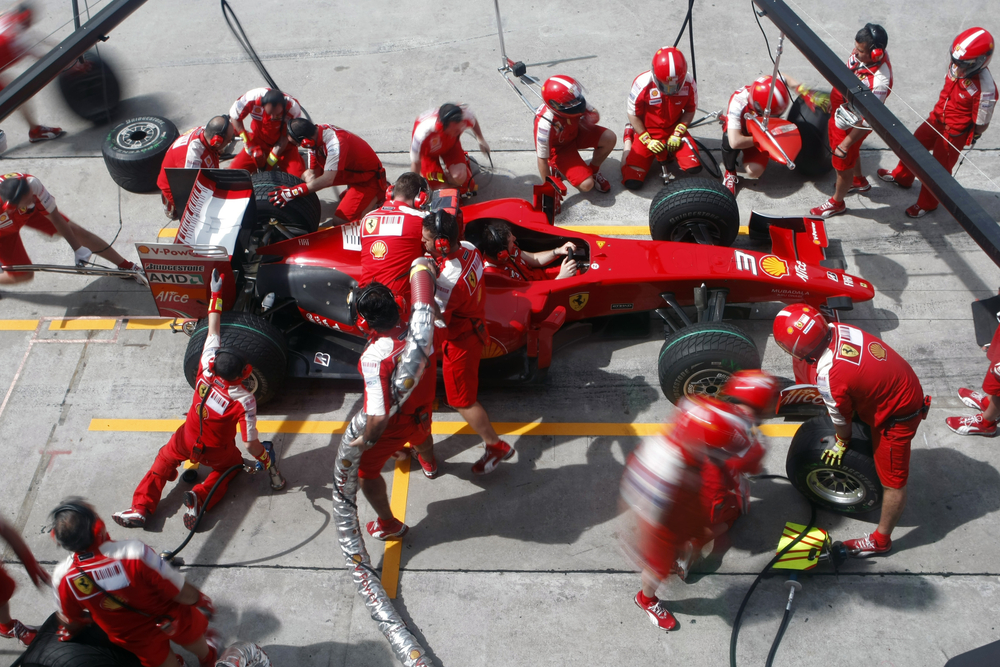On Sunday, the racing world was poised on the edge of its seat, waiting to see if the Formula 1 (F1) season could match the thrilling end to 2014 – and it didn’t disappoint. From practice, through qualifying and the final race, the Melbourne Grand Prix opener was full of drama, intrigue and controversy, culminating in only 11 in 20 of the cars actually finishing the race.
Ill prepared pit teams cost drivers valuable time and even forced Ferrari’s Kimi Raikkonen to retire, while the much anticipated reunion on McLaren and Honda resulted in one retiree and Jenson Button just managing to limp to the line in last place. So in amongst the ensuing chaos, how did Mercedes manage to sail through in style, and crucially, what can businesses can learn from the lessons of Melbourne?
> See also: What businesses can learn from Lewis Hamilton's F1 success
While life in the F1 car cockpit may seem worlds apart from being sat behind a corporate desk, much of the same principles apply. It’s no secret that F1 has developed into an incredibly technology driven sport, with teams using the very latest developments in data insights and modelling for strategy planning. The new power and data driven understandings they’ve been able to glean by utilising new platforms are astonishing. The importance of planning and preparation could not have been more obviously displayed in Melbourne and the same can be seen in the wider business ecosystem.
Bin the ‘off-season’
Many pundits attribute Mercedes’ success to the team’s incredible work during last year’s ‘off-season’. In fact there’s nothing 'off' about it. Put simply, they were the most prepared, the most tried and the most tested. They had the foundations and plans in place, with a highly tuned car, team and strategy, ready to respond with agility and speed.
For businesses, planning is equally vital and organisations operating on an entirely ad hoc and reactive model will always be one step behind, reaction time is everything. Planning needs to take a much more prominent role in day-to-day core activities. This means equipping your staff with the tools that can offer a comprehensive, real-time view of the organisation. Tools that can demonstrate how economic and global events might affect your business, while giving your organisation the agility needed to respond quickly into new markets with new opportunities. Get it wrong, and you’ll see the effects amplified as your competitors leave you with your wheels spinning.
Winning is a data-science, not an art
There are a multitude of sensors across an F1 car monitoring minute fluctuations in everything from tyre pressure and temperature, to fuel levels and breaks. These sensors number into the hundreds for each car and each produces vast quantities of data. As a result the modelling and planning solutions in play, handling all this data, have rapidly expanded in size and complexity.
It would be easy to think that such advancement was exclusive to 'futuristic' high profile sports like F1. But this couldn’t be further from the truth. Advances in technology solutions have unlocked a wealth of opportunities for businesses in their planning and modelling, particularly in the pursuit of greater accuracy and granularity. Spreadsheets and legacy tools are just not up to the task.
> See also: How Marussia automated its business processes to accelerate its F1 calibre
Simply crunching the numbers to provide a business forecast can be so time-consuming as to make the resulting data obsolete by the time it is actually delivered. Many have to choose between acting slowly or going into markets blind. Visibility is crucial; you can’t properly understand a market without knowing your own position within it right now.
Expecting the unexpected
You never know what’s around the next bend. Adaptability is crucial for both organisations and F1 teams alike. The combination of real time data driven insight and the flexibility to actually react to this, is the key to success. For F1 this is about reacting to minute by minute climatic changes and longer term regulatory adjustments, to be the first to get an edge over a rival. For a business this means using the data at its disposal to predict market trends and ensure the organisation is well positioned to capitalise on new opportunities and head-off emerging challenges.
The cloud-era has produced the answer to this, gifting businesses a new level of organisational flexibility, one which allows new processes and technologies to be integrated quickly into working culture. By ensuring your business stays engaged in new IT trends and technologies, it can put in place the necessary measures to operate a flexible approach to working practices and business strategies. Those that fail to innovate will be left eating the dust of the Mercedes of this world.
Sourced from Ian Stone, MD of Anaplan UK










